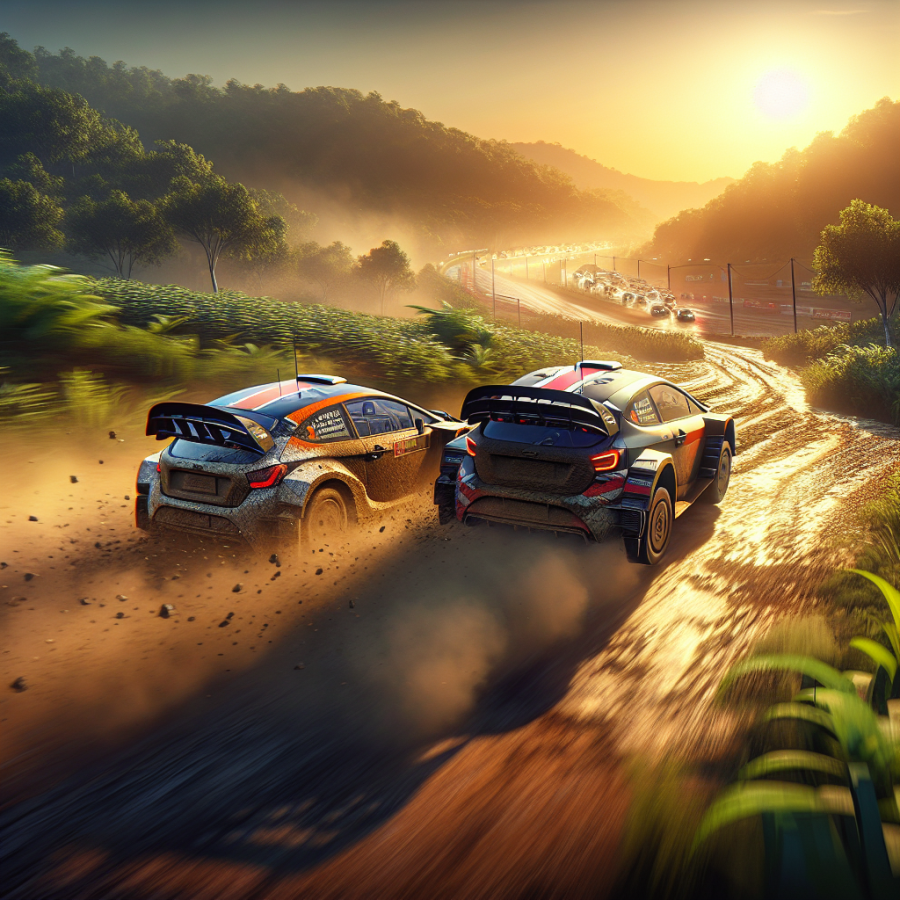Personal Insights into the High-Speed Challenges of Rally Racing
Rally Racing can best be described as an adrenaline cocktail, a blend of speed, precision, teamwork, and above all, the courage to push boundaries to precision. As globally renowned rally driver Colin McRae once said, “Straight roads are for fast cars, turns are for fast drivers.” This is the fundamental essence of rally racing, the high-speed adventure through challenging terrains that tests not just the machine, but more so the man behind the wheel.
Rally racing isn't like any other form of motorsport. Its uniqueness lies in its unpredictability; it's a race against time, where drivers and navigators have to contend not just with other competitors, but with a changing landscape that includes challenging terrains, unpredictable weather conditions, and tight, winding roads that can prove treacherous at high speeds. It's about making split-second decisions at breakneck speed, often while navigating through dust, gravel, mud, snow, or rain. It's also a test of endurance, with rallies often lasting for several days and spanning hundreds of miles.
Having partaken in multiple rally championships and won a fair share of titles, the voyage into the world of rally racing has been anything but dull. As a driver, I can say that rally racing is not just a sport; it's a way of life. From marathon training sessions to perfecting the art of controlled aggression during drives, every second spent on or off the track embodies the spirit of rally racing - a love for speed and respect for the journey.
One of the biggest challenges in rally racing is striking that delicate balance between speed and control. There's a certain audacious speed we rally drivers thrive for, a momentum when pushing the pedal to the metal. But this speed must also come with precise control that prevents the car from spinning off the road while speeding along treacherous terrains and making sharp turns at extreme speeds.
The team dynamics in rally racing is another crucial factor adding complexity to the sport. Unlike other motorsport, rally racing is fundamentally a two-person sport, with a driver-navigator team. The navigator is the unsung hero, operating a labyrinth of controls while simultaneously guiding the driver through route instructions. I have been fortunate to work with some of the best navigators in the sport. Their capacity to remain calm while chaos unfolds in a flurry of dust and rocks around them never ceases to amaze me.
Risk and safety management also make rally racing distinct and challenging.
Read also:
Who's Who in Soccer Aid 2023: A Closer Look at Participants and Events
Exploring the Adrenaline-Fueled Terrain of Rally Racing
Rally racing is an adrenaline-packed motor sport that demands not only exceptional driving skills but also extreme resilience, advanced navigational capabilities, and flawless team coordination. It's an off-track racing discipline that takes place on public or private roads with modified or specially built road-legal cars. The thrill and exhilaration it offers are unmatched, making it one of the most captivating action sports to both watch and partake in.
Rally racing distinguishes itself from circuit racing with its versatile terrain and unpredictability. Unlike circuit racing that uses a repeated loop, rally courses cover hundreds of kilometers, spanning everything from gravel and dirt to ice and snow. These hard-to-predict terrains take the excitement of racing to an extraordinary new level and make it a true test of driver versatility and adaptability. Think of it as a high-speed chess game; each move needs to be calculated and it’s the combination of a quick mind and a quick car that defines victory.
In rally racing, each team consists of a driver and a co-driver or navigator. The navigator reads off a set of pace notes to the driver that reveals what lies ahead on the track. This creates a distinctive collaboration that is crucial for the rally driver to maintain significant speeds while global positioning systems are not permitted.
Beyond the demanding racing conditions and requirement for teamwork, what adds further intensity to rally racing is its event format. Championships are spread over three days with competitors racing against the clock rather than directly against each other. Each day has up to six timed sections, known as stages, with neutral sections, called transit stages, in between to allow for service and repair work. The cumulative time from each stage determines the winner, and there’s immense spectator interest in daily progress since a good or bad day can often change the course of the championship.
A rally car needs to be powerful, fast, and above all, durable. These machines are designed to withstand the most intense of conditions. Unlike track racing cars, they are usually production-based cars alchemically transformed into fire-breathing beasts capable of taking punishment and delivering sheer power. They also feature safety equipment such as a roll cage, racing seats, and fire extinguishing systems.
Unlike Formula 1 and other circuit races, in rally racing, weather and climate play a crucial role. A clear, summer day can suddenly turn into a muddy, slippery quagmire with a particular downpour, completely changing the complexion of the race.




